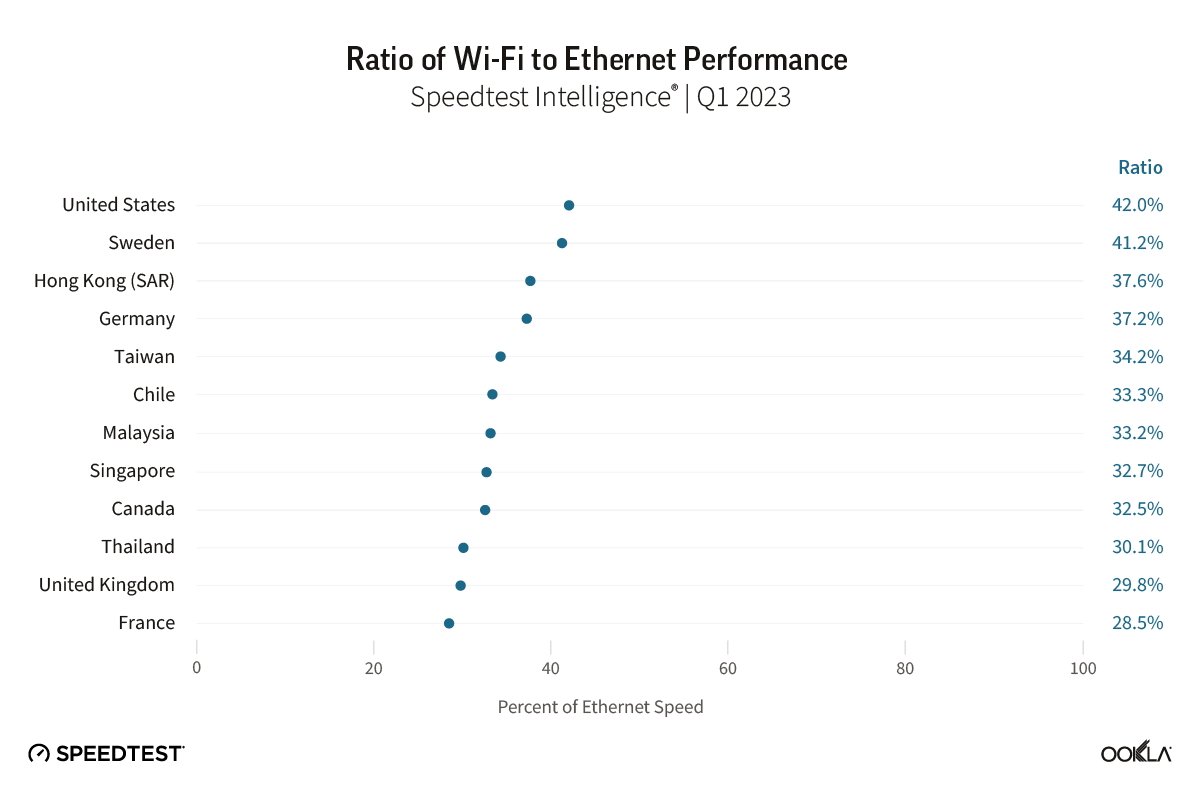Despite Wi-Fi performance still lagging far behind Ethernet performance in homes, it appears there’s hope for the future from what some might consider an unlikely source — the internet service providers.
In an in-depth look at Wi-Fi performance in homes all across the globe, Ookla found that overall Wi-Fi performance is still trailing what homes are getting from ethernet connections. In fact, the disparity between the two can be between around 30% to 40%.
This performance difference is present even in advanced fixed broadband networks. However, it is in these markets where there is hope thanks to adopting better technology and, just as importantly, sending out better hardware to households.
Wi-Fi 4 and Wi-Fi 5 remain the dominant Wi-Fi access technologies across the globe, racking up an astonishing 89 percent of the market as of the first quarter 2023. Markets like the United States, China, Hong Kong (SAR), Canada, and Singapore are pushing towards Wi-Fi 6/6E adoption, though.
It’s with this adoption that the difference in Wi-Fi and Ethernet performance starts to shrink. ISPs in the United States, Canada, Singapore, Sweden, France, and Germany are driving adoption of Wi-Fi 6/6E routers, banking on better fiber availability in these markets as well.
However, the report indicates that ISPs still have room to improve, namely in markets not as advanced as others. In these areas, the service providers aren’t adopting more advanced routers, either, which maintains the status quo between Wi-Fi and ethernet performance.
If you’re looking for router hardware, the report states that ASUS is leading that charge with 39% of its options supporting Wi-Fi 6/6E. Netgear is in second place with a distant 26% of its routers supporting the same Wi-Fi technologies.
Ookla indicates that Wi-Fi 6/6E should be the focus for ISPs right now, especially as it relates to smartphones like the iPhone. Device support for these technologies helps drive adoption, but Apple, Samsung, and others aren’t moving quickly to adopt Wi-Fi 7 at this point.
“With the two largest smartphone vendors globally, Samsung and Apple, currently shunning Wi-Fi 7, ISPs waiting to see if they can leapfrog Wi-Fi 6E to Wi-Fi 7 should stay their hands. The fact that China still needs to allocate the 6 GHz spectrum band — key for Wi-Fi 6E and 7 — for unlicensed use is also significant, and appears to have weighed on the Wi-Fi 6E adoption among China’s leading Android smartphone manufacturers,” according to Ookla.
This story originally appeared on Appleinsider


